Review: LG myTouch Q for T-Mobile
Dec 6, 2011, 1:01 PM by Eric M. Zeman
updated Dec 9, 2011, 9:45 PM
T-Mobile gave LG a shot at designing the carrier's next myTouch-branded smartphone and the result is the Q. This sideways slider is appealing and has a solid spec sheet, but one critical flaw throws a wrench into the works.
Form
Is It Your Type?
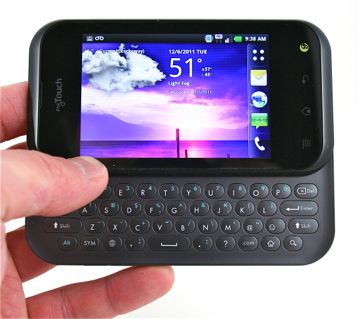
T-Mobile paired up with LG to develop the myTouch Q, a sideways slider that offers a full QWERTY keyboard for messaging and Android 2.3 Gingerbread. Add to that a 5-megapixel camera, 1GHz, and support for T-Mobile's HSPA+ data network, and you have all the ingredients for a successful smartphone. Was LG able to get the recipe right?
Body
The myTouch Q takes a middle-of-the-road approach to the sideways sliding QWERTY phone. It is neither a low-end device, nor is it a high-end device. It takes the road more traveled and doesn't attempt to be something it's not. The front (top) half of the design is black and the bottom (back) half is a nice gray color. It's a simple design that no one could call offensive.
As far as sideways sliders go, the LG myTouch Q is fairly slim and doesn't feel too bulky. It's not RAZR thin or anything, but it's not terribly heavy and certainly not too thick. All the edges are rounded in a way that makes the myTouch Q feel comfortable to hold and use. It's not overly wide, either, which means it is easy to grip in your hand and wrap your fingers all the way around. The black surfaces are slippery plastics, and the gray surfaces have a light coating of soft-touch paint to them, lending them some much-needed grip. Dropping it into your pocket and digging it out again won't be a problem.
The front face has a 3.5-inch screen that looks small compared to the overall footprint of the myTouch Q. It is surrounded by a lot of black bezel. There are four capacitive buttons on the bottom of the myTouch Q for accessing the standard Android controls, though the right-most key is T-Mobile's myTouch key instead of a standard search key. These capacitive keys worked well enough.
The volume toggle is on the left side of the myTouch Q. It is about three-quarters of an inch long, which is a bit too short in my opinion. It's really easy to accidentally press the wrong side of the button and raise the volume when you want to lower it, and vice versa. It has good travel and feedback, though.
The 3.5mm headset jack, microUSB port, and power/volume button are all on the top edge, and there are no controls on the bottom and right sides. The power/lock button has good travel and feedback and is found without trouble.
The slider mechanism has a strong feel to it and slides firmly open and shut thanks to some spring assistance. They keyboard under it is a spacious, four-row affair. The top three rows are for letters, with keys doubling up for numbers and symbols, while the bottom row is for items such as the space bar and punctuation. The keyboard includes duplicates of the home, search, and menu keys. It has a dedicated key to launch the browser, a dedicated text messaging shortcut key, a smiley key, an "@" key, and a ".com" key for faster web and email address typing.
The keys are offset (as they are on a regular PC keyboard) and that helps a lot with typing speeds. The keys are a bit flat, and don't have the best travel and feedback, but I was still able to type messages fairly quickly.
The battery cover pops off with little effort. You can swap-out the microSD card without pulling the battery.
The Three S's
Screen
The LG myTouch Q's 3.5-inch display is smaller than average for today's Android smartphones. Most devices are shipping with displays that are four inches and larger. The display has a rating of 480 x 360 pixels, but it looks like there are fewer than that. It's easy to pick out individual pixels. Edges of icons, text, and pictures are fuzzy and lack sharpness. Last, the display pales next to the competition when it comes to brightness. Using it outdoors is difficult at best. It's not an impressive display by any stretch of the imagination.
Signal
The myTouch Q does pretty well on signal, as far as T-Mobile phones go. It was able to find T-Mobile's network no matter where I took it, and never lost the signal entirely. It registered anywhere from one to four bars at any given time, but low bars didn't have an impact on the ability to make calls or connect to the data network for some surfing. The myTouch Q never dropped any calls, but it missed several.
Sound
The LG myTouch Q is capable of producing good sound all around. Phone calls were loud and clear in the earpiece. I was able to understand callers in crowded shopping malls with no problem. The ringers are plenty loud to be heard in most places, and I can't imaging you missing any calls unless you have the volume all the way down. The speakerphone is also capable of producing loud, clear calls that can be heard easily in a room with music playing the background. The only weakness was the vibrate alert, which I thought wasn't vibrate-y enough.
Battery
The LG myTouch Q has pretty good battery life. I was able to coax it into surviving through about 36 hours between charges. As with most modern smartphones, however, battery life depends a lot on how heavily the phone is used. If you're among the heaviest users, be prepared to charge it every night. Those who do naught but send text messages, perhaps check email, and make a few calls might get more than a day and a half out of it.
Basics
Menus
The myTouch Q runs Android 2.3.4 Gingerbread with only the slightest of customizations from LG. It offers seven home screens for personalization, and the dock at the bottom of the screen has five items in it (phone, messaging, browser, email, and main menu), rather than four.
The main menu is laid out in a vertical grid, which can be separated into different views, such as the most recent apps viewed, downloaded apps, all, etc. The main menu can also be viewed in page and list form. There's also a search bar in the main menu in case you just want to search for the app rather than scroll for it.
The notification shade hasn't been customized in any truly unique way, but it does provide controls for the Wi-Fi, Bluetooth, and GPS radios, as well as Autosync and the sound.
Android 2.3.4 is a decent operating system, but the myTouch Q's performance — whether it's the 1GHz processor or LG's software tweaks — isn't up to par. It is painfully slow. It stutters during screen transitions, freezes up from time to time, and is slow to react to touch screen input. The myTouch Q is frustrating to use and the lockups really make you want to pull your hair out.
Calls/Contacts
LG and T-Mobile have done nothing to set the myTouch Q's calling features apart from the Android masses. The phone application is simple, straightforward, and stock. The software dialer works fine, and the call log lets you return missed calls in a jiffy. When in a call, it is no problem to turn on the speakerphone, mute the call, add a line, etc.
The phone app includes the contact database, which is accessible via one of the tabs at the top of the screen. There aren't any nifty contacts widgets, but at least you can add shortcuts to your favorite contacts to the home screen, as well as add them to a folder of favorites that is visible from the phone application.
Messaging
The LG myTouch Q doesn't stray from the stock Android set of messaging and communications tools.
The standard email and Gmail clients are on board to help manage emails. Both apps work well and don't need more than an email address and password to set up. The one thing I noticed is that it is difficult to get the myTouch Q to display HTML emails. Typically, HTML emails arrive with a little notification that says "show pictures." Tap it and the HTML loads. It works the same way with the myTouch Q, but the processor really doesn't like to do it. I had several HTML emails crash the Gmail application, which I can't ever remember happening on an Android device before.
The stock SMS/MMS is at your disposal for deposing dispositions, if you wish, and includes some pre-fabbed text snippets, such as "In a meeting, call you later." You can also insert image, video, and audio files at will, which appear in line with other messages in the threaded conversation.
Astute users may notice a little "emergency light" icon in their app drawer with a messaging icon and the name "CMAS" under it. This is an application that will be used to receive Amber Alerts and other similar, emergency notifications from T-Mobile or other authorities should they become necessary. We didn't receive any while testing the myTouch Q, so we can't say with certainly how the app behaves.
Google Talk is the only instant messaging client on board. You can snag others from the Android Market, if you wish.
The myTouch Q also comes with the native Twitter and Facebook applications, as well as Twitter for LG and Facebook for LG. These latter versions are slightly customized variants, although I couldn't find anything in them to make them worth recommending over the native ones offered by Facebook and Twitter. Last, there's a generic app called Social+, which is a catch-all status update catcher. It lets you scan the status updates your Facebook friends and Twitter friends post, and can be used to send status updates to both social network services. You can also choose to import RSS-based content into this app.
Extras
Media
Music
The LG myTouch Q ships with the barest version of the stock Android music player. It has zero features enabled save for providing a way to navigate through your library and play some songs.
The myTouch Q has the newest version of the Android Market, which has a music store built into it. You can purchase music directly from the market if you wish.
Slacker is on board for your streaming music needs if that's the way you rock and roll.
Video
The myTouch Q has the stock Android video player, which handles both recorded and side-loaded content. It also has the stock YouTube application, which continues to be really good. You can also rent movies from the Android Market.
If you're a glutton for punishment and don't mind shelling out an extra $10 per month, you can use the T-Mobile Live TV app. This app streams video content to the myTouch Q, but the quality is really low — when it works at all. Navigating the guide is sheer torture thanks to the myTouch Q's sluggish performance. Once video begins to stream, it's mostly OK unless you hit a hiccup in the network.
As far as sharing media is concerned, the myTouch Q ships with software called "SmartShare." This uses the DLNA protocol to push music, pictures, and videos to other DLNA-certified devices, such as HDTVs.
Camera
Camera
The myTouch Q has a 5 megapixel camera with some really nice features. There's no physical camera button, so you have to access it from a shortcut or the app menu. It launches in a snap. The basic shooting screen uses about 80% of the display's real estate as the viewfinder. In the right-most 20%, there is a simple control strip that includes a camcorder toggle, shutter button, and access to the gallery.
Press the screen to pull up a secondary control strip on the left side of the screen, which offers access to camera controls. For anyone who likes to control the behavior of their camera, there's a lot to like. Items such as metering, scene modes (including panorama), ISO, white balance, color effects, shooting mode and on and on are available to adjust at whim.
When you're ready to take a picture, press the on-screen shutter button. The myTouch Q takes about a second to focus, and then snaps the image. (If you want, press the subject you'd like to be the focus of the image, as the myTouch Q supports touch-to-focus.) A review screen pops up instantly. You need to tap the screen to get back to the camera.
The big problem with the myTouch Q's camera, however, is the speed. It, like almost everything else you do with the handset, is painfully slow to respond to user input. This poor little smartphone is drastically underpowered.
Gallery
The gallery is the stock Android option. Photo albums float in stacks in the main gallery view, and you can sift through them in the chronological timeline in which they are arranged. It has a neat 3D look and feel to it.
Unfortunately, it supports on the most basic editing functions (crop and rotate). You can, however, easily share photos to the social network of your choice via the standard Android gallery tools.
Photos/Video
Photos
The myTouch Q's 5 megapixel shooter did a better job than I was expecting it to. Focus was consistently good — meaning mostly sharp photos. I saw only a few images that were a bit soft, and the lighting was bad in those images, which could have been a contributing factor. White balance was nearly always correct, and brightness/exposure were also good.
Indoor shots, as typical, weren't as great as those captured outdoors, but the flash helped a little bit in the darkest places. It's not going to substitute for some good old sunshine, but it will at least light up those smiling faces within an arm's reach or so.
With so many options for controlling the camera's behavior, the more demanding user will have plenty of opportunity to be creative and tweak their imaging experience. Some might pine for more pixels to play with, but I found the myTouch Q's 5 million to be plenty useful.
Video
The myTouch Q captures up to 720p HD video. The video camera software offers many of the same features as found in the still camera. That means you can do a lot of fun stuff before you shoot, though not so much afterward as there aren't any video editing tools.
Based on the quality of the video I shot, you're not going to worry too much about tweaking it after the fact anyway. When set to all the highest quality levels, the myTouch Q did a great job of snagging video. White balance was good, colors looked bright and rich, focus was good, and the myTouch Q handled both bright and dimly lit environs with ease.
You'll definitely want to take advantage of all the sharing options found in the myTouch Q's software, as the video is worth passing along.
Browse/Customize
Browser
The stock Android browser performs acceptably on the myTouch Q, but not amazingly. Sure, the myTouch Q supports T-Mobile's HSPA+ network at 14.4Mbps, but it rarely reached download speeds higher than 3.6Mbps. On average, browsing speeds were decent, but not great. The Android browser itself is a fine browser.
Customize
The LG myTouch Q offers the standard laundry list of customization features, but adds a few as well. Some of the new ones include the categorized main menu, and the ability to create and manage those categories. I also like the slightly different take LG uses for setting up home screen widgets, apps, and shortcuts. The tool slides up from the bottom of the screen and give you a small selection of widgets, etc., in grid form to choose from. I get it, it makes sense. You can easily parse between widgets, apps, shortcuts, and folders using this tool thanks to some sorting buttons at the bottom. Wallpapers, ringtones, and all that stuff are laughably easy.
Extras
Apps
The myTouch Q is one of the worst offenders when it comes to bloatware. There are 59 apps installed out of the box. That's ridiculous. As usual, some of them can be removed and others cannot. There's a flotilla of T-Mobile branded applications, such as T-Mobile TV, T-Mobile Name ID, T-Mobile Mall, MyAccount, MobileLife Organizer, Highlight, Bonus Apps, and 411 & More. If you don't think 59 apps is enough, feel free to dive into the Android Market.
Bluetooth
Bluetooth worked without issue on the myTouch Q. Pairing with mono and stereo headsets, as well as PCs and other phones, was a snap. Sound quality of voice calls through mono headsets was OK, though not as good as normal voice quality. Music sounded acceptable through stereo Bluetooth speakers, but I'd shy away from this feature if you have a good set of regular headphones available.
Clock
The myTouch Q offers the same lockscreen clock that most Android phones do. When initially woken from sleep, it shows the time in a larger, digital read out. The time can be gleaned with but a glance. Sadly, LG didn't do anything to customize the lock screen.
Genius Button
Instead of offering Google Search as the native search function, the myTouch Q carries forward the "Genius Button" concept. Press it, and rather than a simple search box, you get a voice-activated search tool. There are four main categories: Call Someone, Send Message, Search Web, and Find a Business. Basically, the app wants you to say the word "Call", then a contact name. Or say "Send", then a name. Or "Search" for something on the web, etc. Once you get the hang of it, it works OK. But if you think this feature can compete with the iPhone 4S's Siri tool, it doesn't.
GPS
Google Maps and TeleNav Navigator are both installed on the myTouch Q. Google Maps is free and TeleNav costs $10 per month to use for the premium version. There's a "freemium" version that TeleNav offers now that has fewer features and is free. All three apps do a fine job at providing directions to and front destinations — though as realized on the myTouch Q, they run a bit slow and laggy.
Wrap-Up
The LG myTouch Q almost gets everything right. On paper, it has the right feature set to appeal to those looking for a mid-range smartphone, and it has decent enough looks to pull it off. Sadly, it falls short.
My only real complaint with the myTouch Q is the performance lag. The individual apps and services all work well in their own way, but the pervasively slow system performance wrecks everything. Every single app on the phone is gratingly slow to open, slow to respond, and freezes up too often for my tastes.
If you don't care about a phone that's sluggish, the myTouch Q makes good phone calls, has a good, useful keyboard, takes good pictures and video, and doesn't cost all that much. If you're like me, however, and want everything to happen instantly, you might be better served by a device that has a stronger performance record.

Comments
No messages


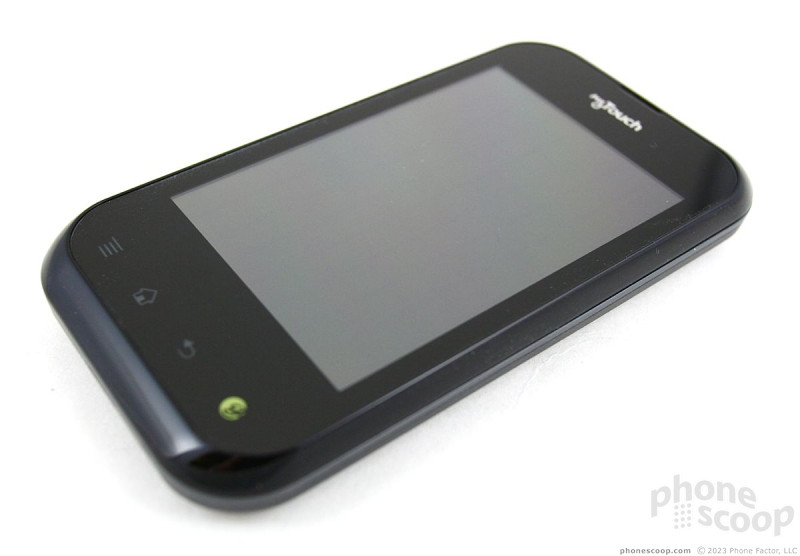















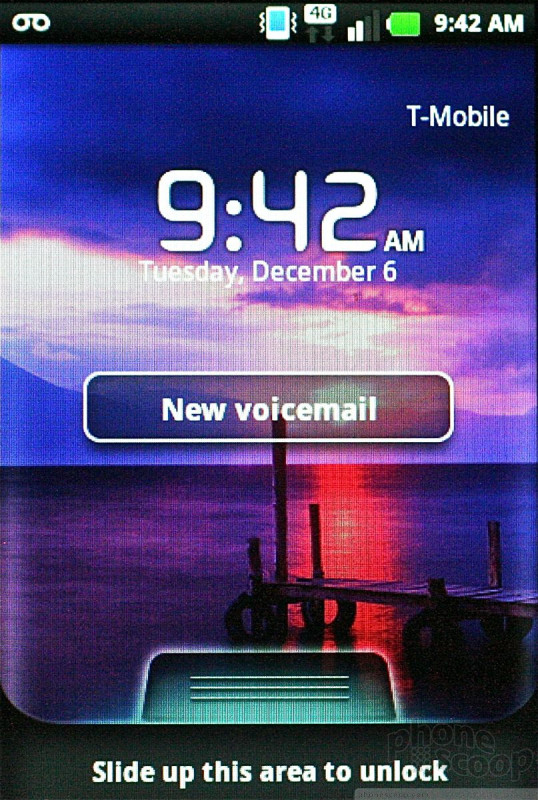





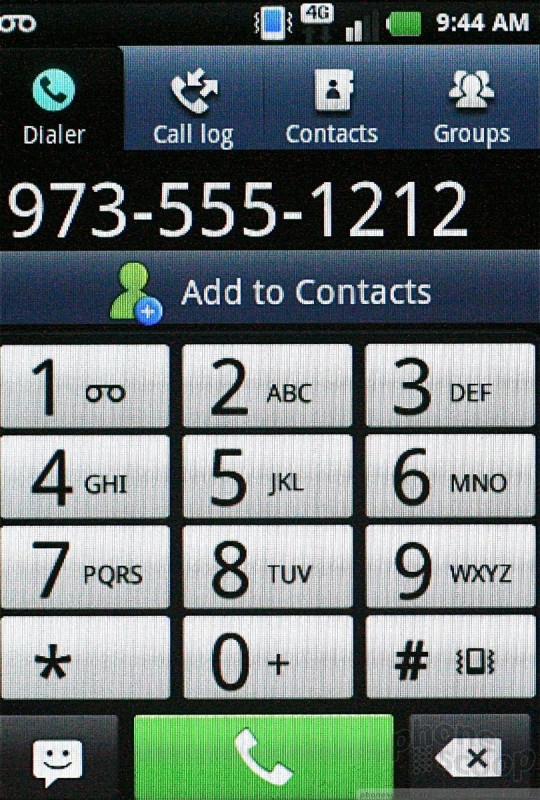









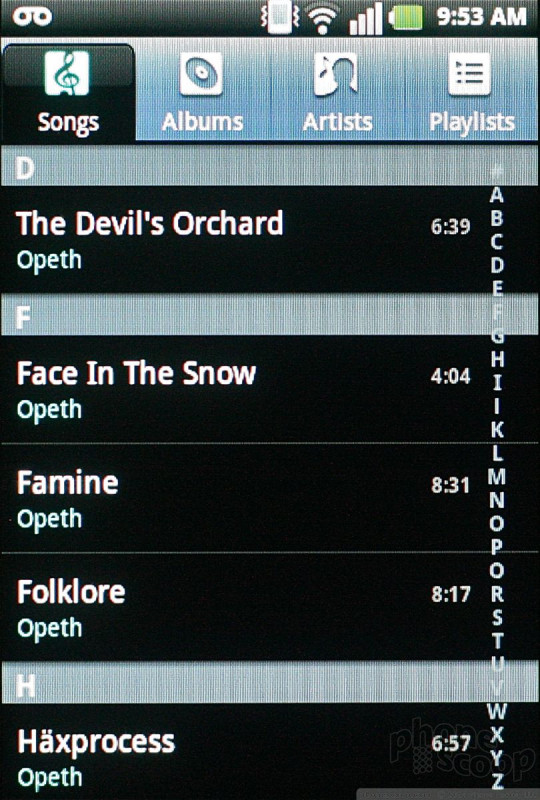



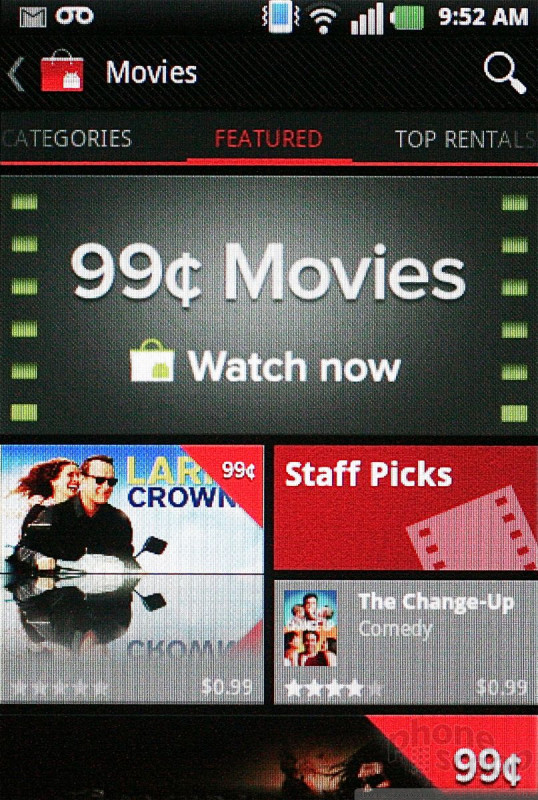


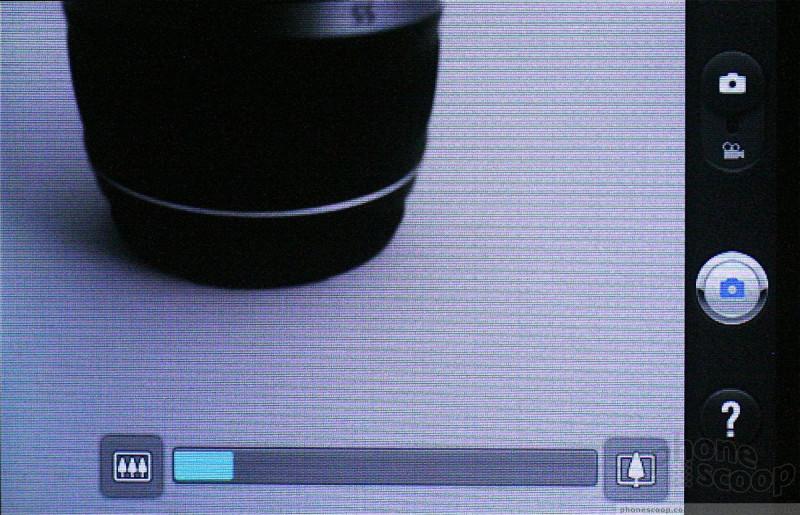



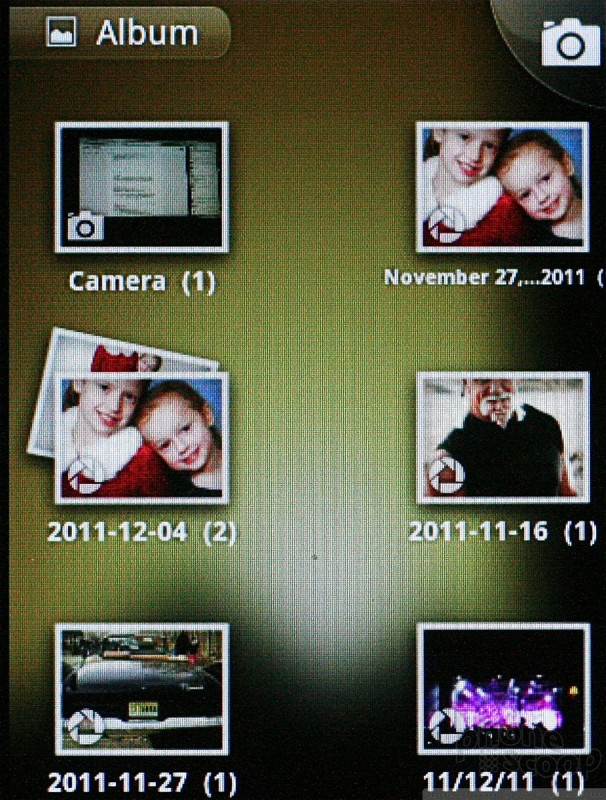



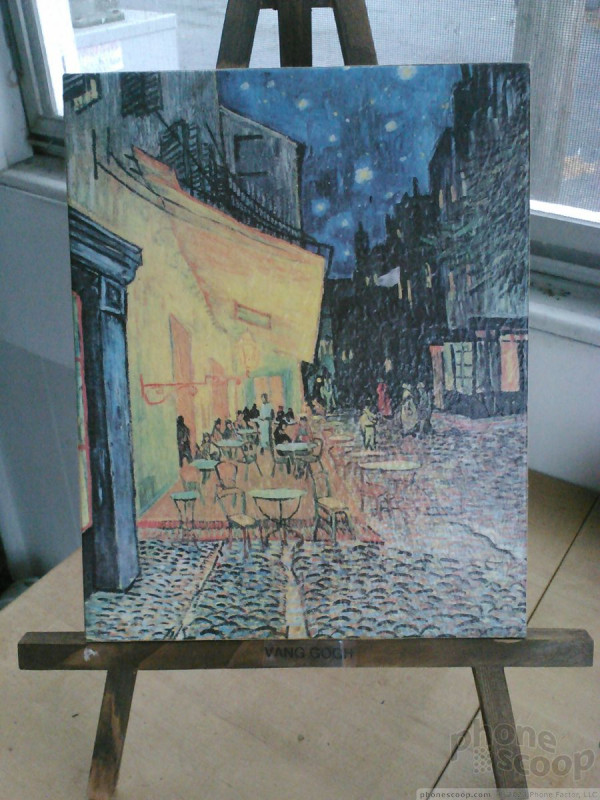
















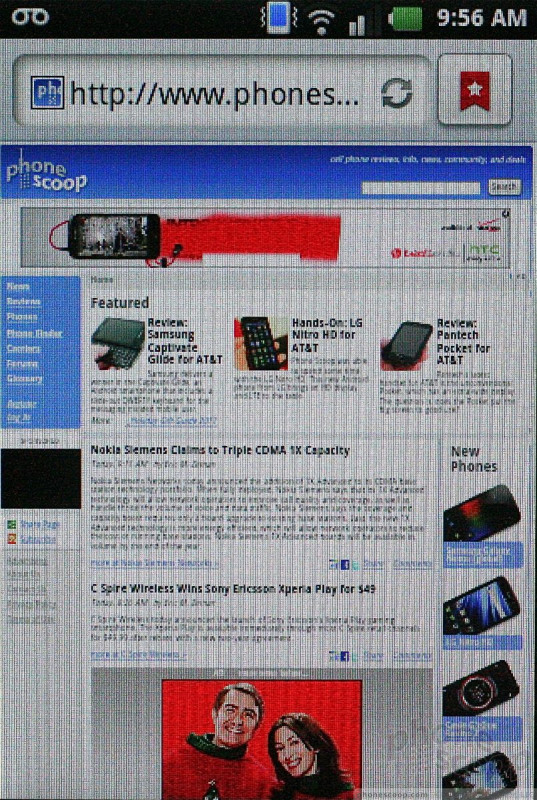



 iPhone 15 Series Goes All-In on USB-C and Dynamic Island
iPhone 15 Series Goes All-In on USB-C and Dynamic Island
 Samsung S24 Series Adds More AI, Updates the Hardware
Samsung S24 Series Adds More AI, Updates the Hardware
 HMD Moving Beyond Nokia with its Own Brand
HMD Moving Beyond Nokia with its Own Brand
 Motorola Upgrades its razr Foldables Across the Board
Motorola Upgrades its razr Foldables Across the Board









